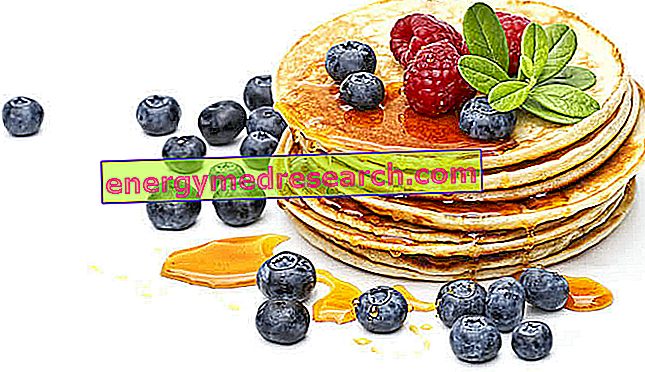WARNING! The first two paragraphs of this article merely describe the "Honey Diet" system as faithfully as possible; the author's nutritional commentary is only available in the last paragraph.
What is it about?
The honey diet is a diet that is based on the alleged slimming effect of honey, to replace all refined sugars in the context of a less restrictive diet.

According to nutritionist Mike McInnes, creator of the system, the slimming effect of honey would be a consequence of its metabolic and psychological impact. He believes that honey can act on two fronts: the reduction of excessive desire for sweet foods and the improvement of lipid catabolism.
The honey diet does not require any caloric count, no weight and no expensive food or supplement; allows you to lose up to 1.5kg in a week.
According to McInnes, most of the weight loss would occur during sleep, before which it would be necessary to ingest a spoonful of honey.
The secret of this system is founded, contrary to what one could imagine, precisely in the high percentage of sugars contained in honey. Of purely natural origin, the carbohydrates of this product react differently than those refined which, in significant quantities, tend to generate a real glycemic-insulin surge. In fact, the increase in blood sugar and insulin levels tends to hinder lipid disposal and increases the desire to consume other sweets, two extremely counterproductive aspects of weight loss.
Using honey it is therefore possible NOT to eliminate the sweetened foods; on the contrary, it allows it to be used in spontaneously moderate quantities without the risk of negatively altering the metabolism.
What to Eat in the Honey Diet?
Let us briefly summarize the fundamental principles of the honey diet:
- Replace sugar with honey: sometimes, food sugar can exert a more fattening effect than fat itself. It is therefore necessary to eliminate discretionary sugar and all the foods that contain it, replacing it with honey. Honey can be added to herbal teas, hot water (before going to bed), coffee, tea, bread, milk, yogurt, etc.
- Prefer unrefined carbohydrates: refined wheat flour, and white rice, as well as the foods containing them, can cause real blood sugar spikes (and therefore also insulin). Wholemeal ones, being rich in fiber, guarantee satiety, a better metabolic impact and intestinal mobility. They must constitute little less than a quarter of the meal and can be used alternately with legumes.
- Always consume protein foods, vegetables and fruit: lean protein foods, such as white meat, low-fat flakes, egg whites, wheat muscle, tofu and fish, must be present at every meal. The portion of vegetables is almost free, while the fruit should be consumed in two daily units, preferring the less caloric one. Protein foods and vegetables should make up over of each meal.
- Use milk and derivatives with fat, avoiding skimmings: although it may seem strange, preferring skimmed dairy products can indirectly increase the sugar content within them (eg the addition of sugar in yogurts to 0.1g of fat ). However, they should be taken in moderation, ie: a yogurt or a jar of cottage cheese, and no more than half a liter of milk a day.
- Avoid junk food: this is the case for all snacks, fast food, sweets, carbonated drinks and alcohol. The honey diet works only if these products are eliminated from the diet.
- Avoid complex carbohydrates one day a week: in addition to eliminating refined products and reducing total carbohydrates, it is also necessary to follow a full day of discharge; Cereal derivatives can be substituted with fruit, vegetables, meat, fish, eggs, yogurt, nuts and other seeds.
- Eliminating potatoes: they are responsible for very high glycemic levels, often accompanying large amounts of fat, toxic compounds (acrylamide, acrolein, polycyclic aromatic agents, etc.) and tend to hinder weight loss.
Comment
The diet of honey is a diet that is basically hyperproteic. It does not exclude carbohydrates, but limits them drastically. It is a system that cannot be adopted by those who practice intense and prolonged aerobic sports, as most of the subjects could experience the symptoms of hypoglycemia: weakness, low blood pressure, fatigue, irritability, sleep waking rhythm compromises, etc.
The breakdown of energy macronutrients is characteristic. It predicts protein superiority over carbohydrates and lipids; furthermore, due to the elimination of the condiments, the total fats are reduced more than significantly.
At a guess, in the honey diet 50% of peptides, 10-15% of lipids and 35-40% of carbohydrates are reached. It is rich in fiber and, based on the amount of oilseeds and fish, can provide a sufficient proportion of essential fatty acids.
The amount of vitamins and minerals may be more or less suitable depending on the specific case; an accurate evaluation is however completely impossible, since the honey diet does not include the weight of the foods.
This system should not be used in clinical nutrition, although the use of a few whole grains, derivatives and legumes could benefit a possible pathological condition of hyperglycemia (typical of type 2 diabetes mellitus) and hypertriglyceridemia.
It is completely unsuitable for the pregnant woman's nutrition and can create imbalances if adopted in old age.



